How to Upload Image to Cache Page
Images take up over lx% of modernistic websites' full bandwidth. In the case of cutting-border, prototype-rich designs, such every bit those for social media like Pinterest, that number is, remarkably, over 85%.
Bandwidth is a costly article that gobbles up well-nigh of the It budget of high-traffic sites, easily surpassing hosting and storage costs. In addition, because the sheer book of traffic takes time to consume, your visitors often spend a lot of time waiting for images to load.
Given the astronomical It outlay, visitor abandonment due to lengthy load times, and the subsequent reduction in conversion rate and revenue, do brand information technology a high priority to optimize your websites images and speed up their delivery.
Cloudinary offers a conclusive solution to a large number of image- and video-related issues on both desktop and mobile apps, from upload to storage, transformation, optimization, and delivery. You lot as web developers no longer demand to grapple with those challenges.
The sections beneath delineate the x virtually common mistakes committed while you're handling website images forth with the related fixes.
The mistake: A mutual shortcut for resizing images is to exercise that on the browser instead of the server. The story backside that selection usually goes this way: thumbnails of a certain dimension abound on the site, and a new design calls for them to exist of a slightly different dimension. Sometimes accidentally and sometimes intentionally, web developers specify a unlike CSS width and acme for the browser, leaving the original images as is.
Later on, even though the images await the same on modern browsers, the bandwidth has increased, resulting in longer load times of unnecessarily big images and wasted delivery bandwidth. The problem is fifty-fifty more pronounced with older browsers, whose resizing algorithms are commonly subpar.
Examples of such an objectionable scenario are plentiful. Take Yahoo'southward front folio (below), which downloads all the thumbnails in its MOST Popular section at double the number of pixels than that of their actual viewing size.

The ready: Ensure that the images you deliver are of their required dimensions—fifty-fifty if that entails creating dissimilar-sized thumbnails for the same prototype to fit different pages. Never deliver oversized images and rely on the browser to resize them.
The automated way with Cloudinary : Add w_auto to the URL to scale the image to fit the various layout widths and send users the versions that display all-time on their browsers from the same URL.
The error: JPEGs have truly revolutionized the web'southward prototype arena. For many years, web developers can describe high-resolution images in great detail with the lossy JPEG format, expending only a fraction of the bandwidth required by rival formats.
Still, many people refrain from compressing JPEGs even though, for nigh websites, you tin safely reduce the JPEG quality settings a notch (between 5-15 percent, but not much lower) with no discernible loss in visual quality.

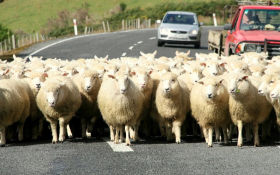
For all that the higher up two images wait similar, the left i is a 95% JPEG (34 KB); the right ane, lxxx% (17KB), requiring only one-half the bandwidth to download and loading twice as fast. Those gains are well worth the miniscule loss in quality.
The gear up: Do experiment with lower JPEG quality levels. In fact, studies have revealed that a l% JPEG quality yields a reasonable result for sure websites. Even though higher-quality JPEGs always await sharper, that minimal improvement is seldom worth the extra bandwidth and longer loading fourth dimension.
The automatic fashion with Cloudinary: Add to the image URLs the quality parameter ( q ) set to auto ( q_auto ). Cloudinary then automates the trade-off between file size and visual quality, on the fly, with perceptual metrics and heuristics, tuning the encoding settings and pinpointing the optimum quality and compression level tailored for the image content and format. The significantly reduced file size that results poses no noticeable degradation to the human being heart.
The mistake: Nowadays, JPEG, PNG, and GIF are the most pop file formats for images. According to the Web Annual, sixty% of the web'southward images are JPEGs; PNGs account for 28%. Note, however, that they play unlike roles and that adopting the incorrect format slows down folio loads and incurs college costs for the site.
The most common mistake is to deliver photos every bit PNGs on the erroneous supposition that, invariably, as a lossless format, PNG yields the optimum reproduction for photos. In reality, such website-image optimization is unnecessary. A relatively high-quality JPEG whose file size is only a fraction of that of a PNG delivers comparable quality.
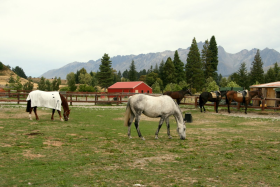
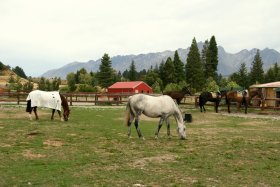
The PNG on the left weighs a whopping 110 KB. The JPEG on the right, which looks nearly identical, takes up only xv KB.
The ready: Adopt the correct image formats for the various content types:
- WebP for computer-generated images, such as charts, branding and logos. Both lossy and lossless compressions work in WebPs and transparent elements, such as overlays, displaying well in near modern browsers.Blithe WebPs trump GIFs past combining pinch types in one unmarried animation, making it a breeze to create animations from videos.
- JPEG for photos.
Annotation: Opposite to common conventionalities, PNG outperforms GIF in almost all aspects.
The automated way with Cloudinary: Add to the epitome URLs the fetch_format parameter ready to machine ( f_auto ) Cloudinary then automatically detects the requesting browser and selects the most efficient format for prototype commitment.
The mistake: It's a little-known fact that, despite PNG existence a lossless format, yous tin further compress PNG images with costless tools that reduce their file size by up to 50%, delivering the exact same images. Unfortunately, many developers skip that step, leaving images unoptimized.
The fix: Optimize images with open-source libraries like PNGCrush and OptiPNG. If y'all need not automate the process, manually compress your PNGs further with Yahoo's smush.it service.
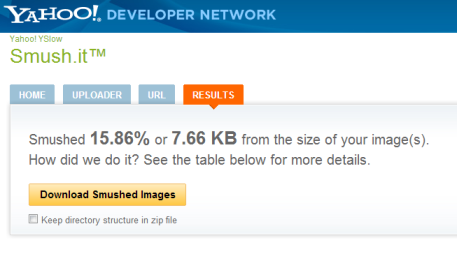
An example of Yahoo smush.it in action.
The automated mode with Cloudinary:Add to the image URLs both f_auto and q_auto . Cloudinary then does the following:
- Tune the encoding settings and pinpoint the optimum quality and pinch level tailored for the image content and format, reducing the file size with no loss in visual quality.
- Check if a dissimilar image format would yield a smaller file size while maintaining the visual quality and, if so, adopt that format.
The mistake: Visitors to many mod websites tin upload photos, such every bit profile pictures or snapshots from sightseeing trips. Taken with a modern camera, those images comprise a load of metadata in Exif or IPTC (International Press Telecommunications Council) format: details like the camera model, engagement and time, discontinuity, shutter speed, focal length, metering mode, ISO, and location.
In nigh cases, it makes perfect sense to delete the metadata for privacy and reduced file size. Few accept the time to practise that, however, wasting bandwidth and pain the browsing feel.
The set up: Strip the metadata off your images and user-uploaded photos. If necessary, retain the information somewhere for future reference.
A tip: Even if the metadata is of no employ to your site, do retain the epitome'due south original shooting orientation to ensure a correct brandish. So, earlier deleting an prototype's Exif details, rotate it to its correct orientation based on the Exif data.
The automatic way with Cloudinary:After uploading an asset to Cloudinary, you lot receive a response from the upload API with the following details:
- The asset's width, height, number of bytes, format, and other specifics.
- The semantic data, i.east., ETag; face up or custom coordinates, if any; and the number of pages (layers) in the "paged" files.
For other semantic information, such every bit the metadata (Exif, IPTC, XMP, GPS), the color histogram, predominant colors, custom coordinates, the pHash image fingerprint, and face or text coordinates, add together the appropriate optional parameters. Cloudinary then includes all that information in the response along with the default details.
The mistake: Another common error is hosting images on your own server, usually the aforementioned machine that serves your site. 2 undesirable outcomes follow: a heavy burden on your server and a missed opportunity to leverage the astonishingContent Commitment Networks.
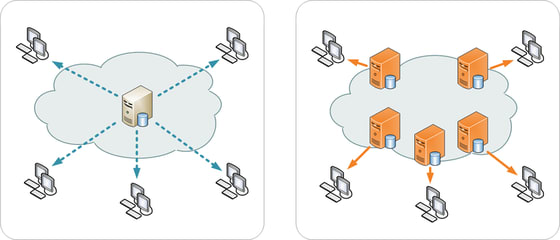
The fix: Deliver content through CDNs, which is simple to set up. They serve images much faster than site-hosting services past operating through numerous worldwide servers, called edges, automatically routing visitors to the nearest border location for the best possible operation with a much reduced latency. Priced by the required bandwidth, CDN providers charge slightly more than than web-hosting services. Even so, the benefits CDNs offer are well worth their charges, which many consider affordable.
The automatic way with Cloudinary: Cloudinary leverages multiple CDNs, including Akamai, Fastly, and CloudFront, with thousands of global delivery servers forth with advanced caching and dynamic, URL-based delivery techniques. The result? Fast delivery of resources to users worldwide.
Smart CDN-choice and dynamic multi-CDN switching features are bachelor to enterprise customers.
The fault: Besides photos and thumbnails, your site probable also displays icons and auxiliary images—logos, arrows, stars, signs, marks—for an engaging and unique look and feel. Button pieces, shadow portions, border parts, and other elements are all instrumental in helping you dynamically build widgets.
You'd exist surprised at just how many tiny images reside on a site. A typical results page returned past Google Search, for example, comprises over 80 small-scale icons.

A mutual mistake is embedding all those small icons every bit is in their site, lengthening the download fourth dimension. Plus, since an average browser tin simultaneously download a maximum of about six images only, the resulting latency intensifies for every batch of downloaded images. Besides, your spider web server might go unresponsive while processing the many download requests. In the meantime, your visitors might give upward on the deadening images and plough their backs on your site, never to return.
The fix: Group all your small icons in a CSS Sprite method as a single prototype. Your webpage then needs to download only that prototype from your server, and the page'due south HTML lawmaking points to the icons within the Sprite with alternative CSS class names.
In the example of the Google Search results page with that multitude of icons, you download but one image. The browser then quickly caches the image from Google's servers, immediately displaying all the icons.
The automated way with Cloudinary: Group multiple logos into a unmarried sprite image with Cloudinary's sprite-generation capabilities and so display it with the supported_cloud tag. Doing so enhances folio performance and eases epitome management.
The mistake: Since older browsers did non display shadows, rounded corners, and special fonts coded with CSS, developers created those elements every bit images. That exercise produced a deluge of images, ultimately downgrading the browsing experience and rendering updates and other tasks difficult to perform, non to mention requiring more development time and raising costs. Just changing the text embedded in an image became a nontrivial chore. Even now, when converting a website'due south design into HTML components, many developers go along buttons equally images.
Modern browsers aptly display elements like shadows that are built with elementary CSS directives, only that laborious practice of implementing elements in image class still persists. An example is this portion of CNN'south Sprite prototype with a large file size of 61 KB:

The fix: Ensure that those in your organization who are tasked with creating image elements code them in CSS3 whenever feasible. To support older versions of IE, downgrade your markup to a performance, even if imperfect, blueprint. Otherwise, emulate CSS3 with an alternative, such as CSS3 Progressive Internet Explorer (PIE).
The automatic style with Cloudinary:Specify `max` every bit the value of the radius parameter (`r_max`) to have Cloudinary ingather rectangular images to an ellipse or foursquare images to a circle.
The error: Since websites' image files rarely modify, your visitors' browsers and other servers forth the way (CDNs, proxies, etc.) can cache those files. Once cached, the local re-create is displayed with no farther downloads on subsequent visits to your site. Correct cache settings are, therefore, paramount, saving bandwidth and accelerating page loads.
Unfortunately, caching errors occur due to the unnecessary concern that lengthy enshroud settings issue in a persistent display of onetime images even if they have been updated.
The fix: Add a fingerprint (MD5, timestamp, etc.) to your epitome URLs and then that they will modify in case of image updates, causing the browser to refetch the images. Most modern web-development platforms automate that step, nixing the problem at its source.
In add-on, equally a safeguard, adopt aggressive caching, i.e., set your images' HTTP ' Expires ' header to every bit far in the future as possible.
The automated way with Cloudinary:Cloudinary dynamically handles caching with no need for manual steps on your office. Either of these two scenarios applies:
- For asset replacements inside your Cloudinary media library, the original URLs stay valid.
- For asset replacements effected through Cloudinary's Upload API, fix the ` invalidate ` parameter to ` true ` as part of the API request for the CDN cache so that the original URLs volition stay valid.
For details, see this [Q&A][https://support.cloudinary.com/hc/en-us/manufactures/202520852-How-tin-I-update-an-already-uploaded-image-].
The mistake: Your site is viewed through many different devices, with a huge ascension in mobile and tablet in contempo years, as evidenced in site analytics. So, how tin you display a big image on mobile devices whose resolution is commonly much lower than that of desktop machines?

Developers tend to opt for the fast road, i.e., deliver the aforementioned exact images regardless of device, relying on the client (the browser) to resize them. That practice exacts a high toll: lengthy load times coupled with wasted bandwidth. As well, 3G and roaming users end up paying a lot more to download the useless, high-resolution images for no benefit.
A symmetrical, as broken solution aims for the lowest common denominator, i.east., deliver low-resolution images to all devices, rendering a shabby brandish of your site on newer, loftier-resolution devices.
The fix: Identify your visitors' mobile devices and resolution through their user agent and, optionally, additional client-side JavaScript lawmaking. Afterwards, retrieve the best plumbing equipment prototype from your servers according to the correct resolution.
Every bit a prerequisite, create a fix of thumbnails for each of your original images. For speed and ease, automate that task with the excellent JavaScript packages that are slated for that task.
The automated way with Cloudinary: Take Cloudinary dynamically resize your images on the wing by specifying the width and height that you desire: add the ` <picture> ` tag and set the ` srcset ` and ` sizes ` parameters of the ` <img> ` tag to have the browser cull which image version to display.
Y'all can also add transformation parameters to your image URLs, later on which Cloudinary will modify the images according to the parameters in real time.
For details on how to build responsive images with the ` <img> ` and ` <pic> ` tags, run into these two posts:
- Responsive Images Withsrcset, sizes, and Cloudinary
- Automatically Art-Directed Responsive Images
In addition, the writeup on the open up-source tool Responsive Breakpoints Generator shows you how to summate the optimal number of versions for an epitome to balance the number of generated versions and the file-size reduction in each of the versions.
This article summarizes the most mutual, image-related website issues we at Cloudinary frequently see along with the solutions.
For images that are uploaded to our cloud platform, Cloudinary tin can dynamically transform them to any thumbnail size, file format, and quality so that you can examination them and determine the settings that best fit your site and user expectations. In addition:
- You can create unproblematic, manageable Sprites through Cloudinary.
- Cloudinary automates the procedure of stripping images of metadata and optimizing them for delivery from a fast CDN with the correct cache settings.
- Cloudinary'south cloud-based dynamic image-resizing capabilities produce responsive designs.
In short, with Cloudinary, yous can seamlessly and efficiently manage images, hassle free. Check information technology out past starting with signing up for a gratis account. Nosotros welcome your feedback.
- Prototype Optimization for Websites: Beautiful Pages That Load Quickly
- PHP Paradigm Compression, Resize, and Optimization
- Python Prototype Optimization and Transformation
- Vue.js Tutorial: Image Optimization for Web Apps
- Evolution of <img>: Gif without the GIF
- CDN for Images: Optimize and Deliver Images Faster
- 3 Popular and Efficient Ways for Loading Images
- Introducing Cloudinary'due south WordPress Plugin for Dynamic Images and Video
- Shrink an Paradigm Automatically Without Losing Quality
- Automatically Reduce Epitome Size Without Losing Quality
- How to Automatically Adapt Website Images to Retina and HiDPI Devices
Source: https://cloudinary.com/blog/top_10_mistakes_in_handling_website_images_and_how_to_solve_them
0 Response to "How to Upload Image to Cache Page"
Post a Comment